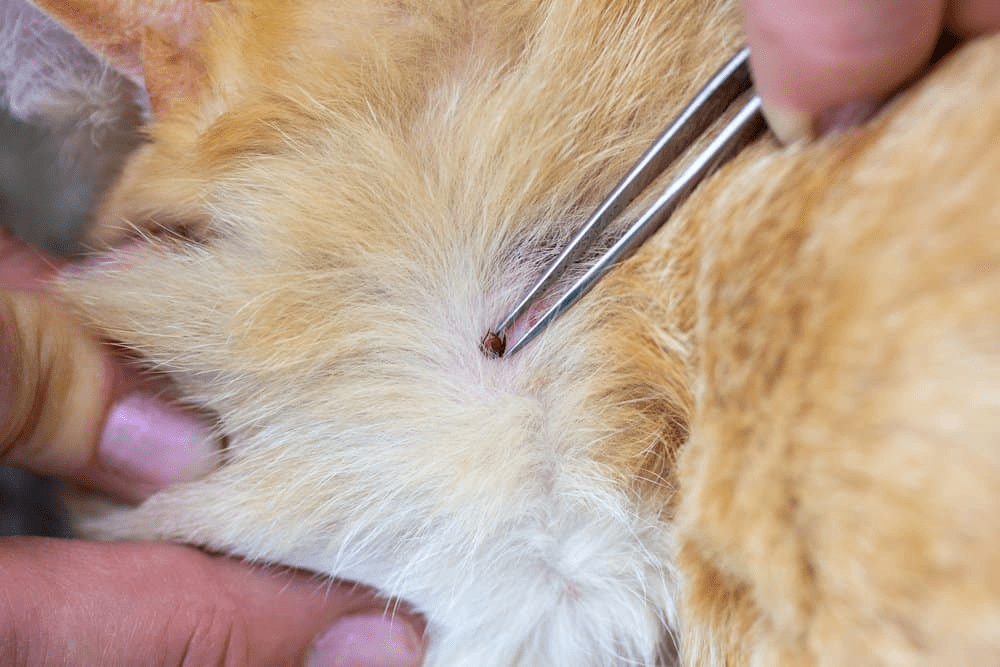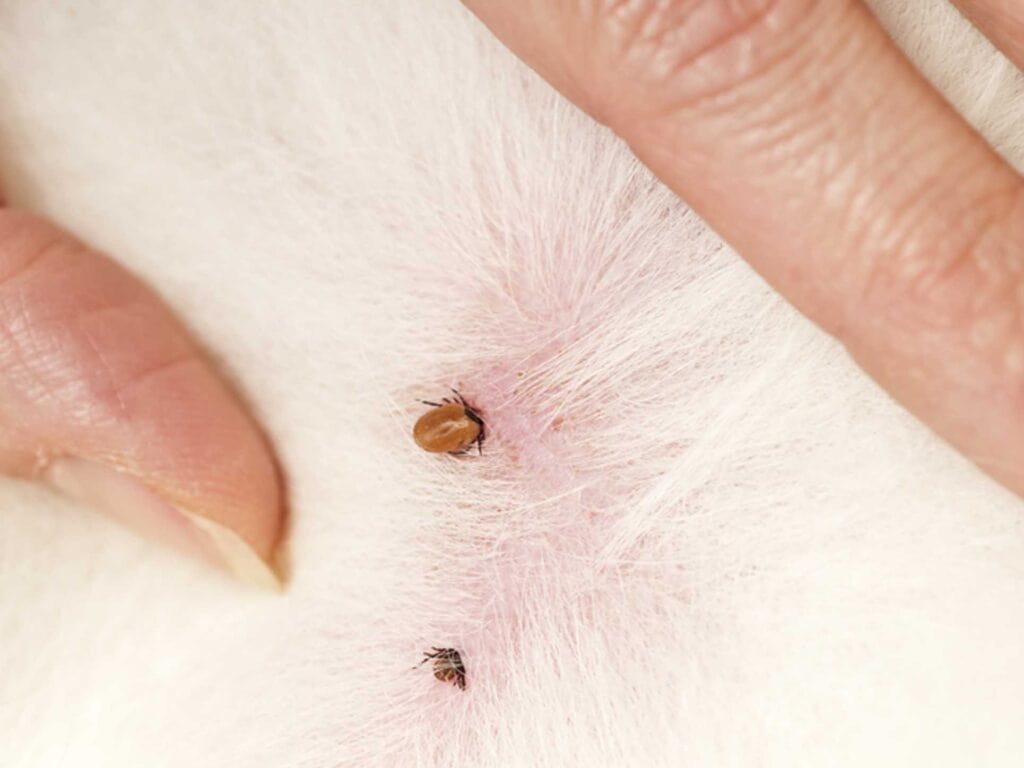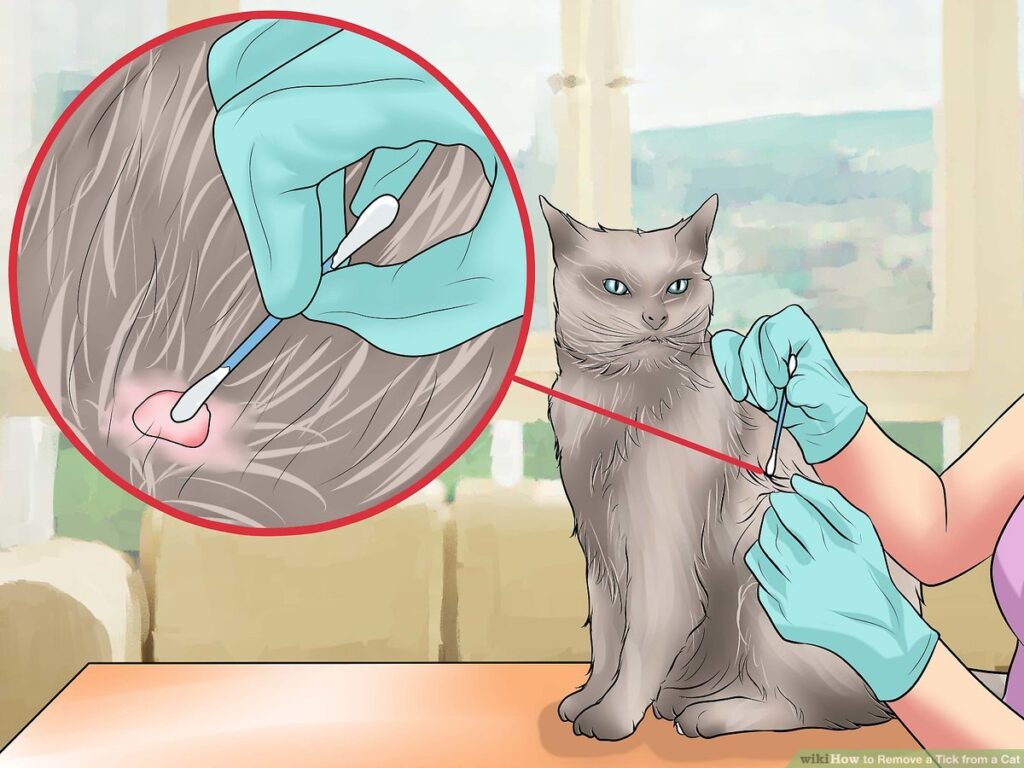The Tiny Terror That Latches On
Let’s face it—ticks are gross, sneaky, and downright annoying. They latch onto your cat like unwanted hitchhikers, sucking blood and potentially transmitting dangerous diseases. The worst part? Cats, being the independent explorers they are, often pick them up without you even noticing.
So what do you do when you find a tick buried in your cat’s fur like an unwelcome guest? Do you panic? Set the house on fire? Consider moving?
Relax. I’ve got you covered.
This guide will walk you through how to find, remove, and prevent ticks from turning your cat into an all-you-can-eat buffet. Ready? Let’s go.

1. Gather Your Tick-Fighting Arsenal
Before you launch into battle, make sure you have the right weapons.
✔ Fine-tipped tweezers or a tick removal tool (never use your fingers!).
✔ Disposable gloves (because handling a tick with bare hands? Nope.)
✔ Antiseptic or disinfectant to clean the area afterward.
✔ A sealable container or small jar (to store the tick in case your vet needs to examine it).
✔ Treats (because your cat will hold a grudge after this ordeal).
🚨 Pro Tip: Don’t use nail polish, petroleum jelly, or fire to remove a tick. Those are old myths that can actually make things worse.

2. Keep Your Cat Calm (Or at Least Try To)
Let’s be real—cats aren’t exactly thrilled when you start poking around their fur. And if your cat is anything like mine, they’ll probably flop dramatically or launch themselves into another dimension the moment they sense something is up.
How to Keep Your Cat Still:
🐱 Choose a quiet, enclosed space where they feel safe (like a bathroom or a favorite chair).
🐱 Enlist a helper to hold your cat gently but firmly.
🐱 Use a towel burrito technique if your cat refuses to cooperate—wrap them snugly, leaving only their head exposed.
🐱 Speak softly and reward them with head rubs (until they realize what you’re actually doing).
🚨 Reality Check: No matter how much you prep, your cat will probably act like you’re trying to steal their soul.

3. Locate the Tiny Vampire
Ticks are small but mighty pests, so finding them can be tricky.
Where Do Ticks Hide on Cats?
✔ Around the ears and face – Ticks love the warm, hidden areas near a cat’s ears.
✔ Under the collar – If your cat wears a collar, ticks love to hide beneath it.
✔ Between the toes – Because apparently, ticks have a foot fetish.
✔ Armpits and groin – Yep, just like humans, these warm, dark areas are prime real estate.
How to Spot a Tick:
🐾 It feels like a small bump or lump on the skin.
🐾 It can be brown, black, or reddish in color.
🐾 It might be engorged with blood (sorry for the mental image).
🚨 Pro Tip: If you’re unsure whether it’s a tick or just a scab, use a magnifying glass. If it has tiny legs, congratulations—you’ve found your target.

4. The Great Tick Extraction
Now comes the main event—removing the tick without making things worse.
How to Remove a Tick Safely:
🐱 Put on gloves to avoid direct contact.
🐱 Use tweezers or a tick removal tool to grab the tick as close to the skin as possible.
🐱 Pull straight up with steady, even pressure (no twisting or jerking, or the head might break off—gross).
🐱 Do not crush, squeeze, or pop the tick—this can release harmful bacteria into your cat’s body.
🚨 If the head stays stuck in the skin, don’t panic—your cat’s immune system will push it out over time. But if there’s swelling or infection, see a vet.

5. Tick Disposal: Don’t Just Flush It!
You might be tempted to just flush the tick down the toilet and be done with it, but that’s not the best move.
How to Dispose of a Tick Properly:
✔ Drop it into a small container with rubbing alcohol (this kills it instantly).
✔ Seal the container and keep it for a few days in case your vet wants to check it for diseases.
✔ Do NOT crush the tick with your fingers (unless you want bacteria all over you).
🚨 Reality Check: If the tick wiggles even after removal, congratulations—you’ve found your new nightmare fuel.

6. Clean the Wound (And Your Cat’s Trust Issues)
🐾 Use antiseptic or disinfectant to clean the bite area.
🐾 Monitor for signs of infection, like redness, swelling, or pus.
🐾 Offer treats or playtime—because your cat is now questioning their trust in you.
🚨 Pro Tip: If your cat seems lethargic, loses their appetite, or develops a fever, take them to the vet immediately—tick-borne diseases can be serious.

7. Tick Prevention: Stop the Invasion Before It Starts
Now that you’ve survived Tickpocalypse, it’s time to make sure it doesn’t happen again.
Preventative Measures to Keep Ticks Off Your Cat:
🐱 Use vet-approved tick preventatives – Topical treatments, tick collars, or oral medications work wonders.
🐱 Check your cat regularly – Especially after they’ve been exploring the great outdoors.
🐱 Maintain your yard – Keep the grass trimmed and remove leaf piles where ticks love to hide.
🐱 Consider a “catio” – If your cat loves being outside, an enclosed cat patio lets them enjoy the fresh air without the risk of ticks.
🚨 Reality Check: No matter how careful you are, if your cat roams outside, there’s always a chance they’ll bring home an unwanted hitchhiker.

Final Thoughts: The Tick Battle is Winnable
Dealing with ticks is gross. Your cat hates it, you hate it, and honestly, even the tick probably hates getting ripped out.
But with the right tools, a little patience, and some sneaky preventative care, you can keep your feline friend tick-free and happy.🐾 Have you ever had to remove a tick from your cat? How did it go? Share your (probably traumatic) experience in the comments!

